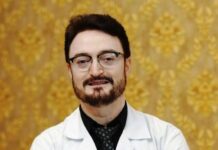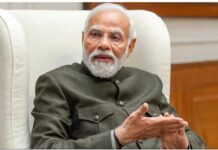Dr Mohit Dhawan, a pioneer and an inspiration to young dentists to implement digital technology in daily practice of Dentistry and dental 3D printing.
Dr Mohit Dhawan who recently became pioneer dentist to introduce Straumann cares software and in dental office 3D printing said that as in other fields 3D printing in Dentistry is also making advances every day. We have more and more softwares and upcoming new 3d dental printers to allow us as Prosthodontist and Implantologist to provide fantastic treatment solutions for our patients desiring great smiles. Dr Mohit Dhawan explains: “It is an additive manufacturing process of making three dimensional teeth, molds and other dental application products from a digital file. We add resin in 3D printer to build up the model or the appliance that we’re manufacturing in the dental field. It deposits resin layers or photo cures a composite material to build up layer by layer and manufacture the actual dental appliance.”
In dentistry, there are two major types of printing: photo curing of resins and fused deposition. From a practical and a clinical point of view, photo curing of resins is more practical for dental applications.What exactly are the applications of 3D printing in a dental office, and what could you do in your own clinic? Dr Dhawan describes some of the main uses:“We start with 3D printing of models. We start off with Diagnostic models that are used for evaluation as well as models that are capable of being used for designing your new prosthesis-Crowns and Bridges, whether they be fixed Crown and Bridge or implant supported restorations. The modern 3D printers in my practice are able to manufacture precise and accurate models, implant restorative models and aesthetic shells, which are try-in composite veneers.
We can 3D print surgical Implant guides, double crown lengthening surgical guides for adequately profiling both the soft and hard tissues in Implant cases. We can generate provisionals and immediate loading prosthesis. So for surgical implant cases we can 3D print those crowns and teeth.
Now we can 3D print fully digital dentures, where we can print in one resin the pink portion of a denture, and in another resin – teeth. So we’re now able to 3D print those two separately, and then bond them together with resin. For my visiting orthodontist, we can fabricate indirect bonding trays to help him place the brackets more precisely and quickly. We are also 3D printing night guards, where we have the option to print at 100 microns or 150 microns. You’re talking about various applications of 3D printing.Most models are printed between 25 microns and 100 microns. The general consensus is between those two. The main difference between using 50 or 100 is the specific printer you’re using. We use 25 microns for most of our models.”
Dr Mohit Dhawan further said that there are so many ways that 3D printing technology can be applied in dental clinic workflows to benefit young dentists and their patients:
“One of the great things that 3d printing as a whole offers to the young dentists and to their patient is now you have the young dentists not alone when they are doing treatment planning; they have access to the community cloud groups where we have various specialists that can help young dentists in different disciplines: design, help them in the treatment planning, and then design the different appliances that can be printed. In the dental office itself, the dental appliances can all be manufactured locally, so the young dentists can offer the client, the patient, the best treatment planning and appliance designs. It really opens up tremendous opportunities for young dentists and patients.”
It’s important and high time young dentists start making enough space in their dental clinics: for the 3D printer, computer, cleaning station, and an area for finishing the 3d printed appliances.
















